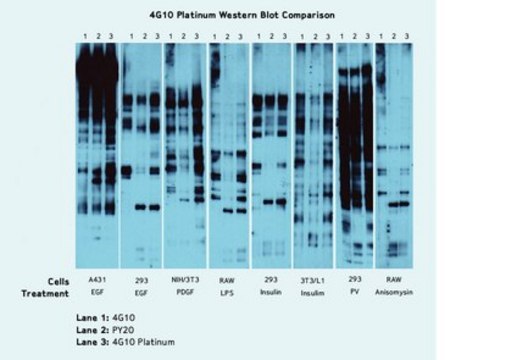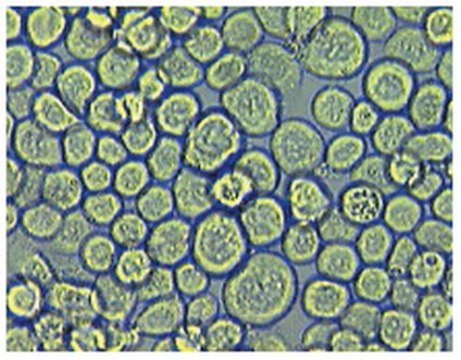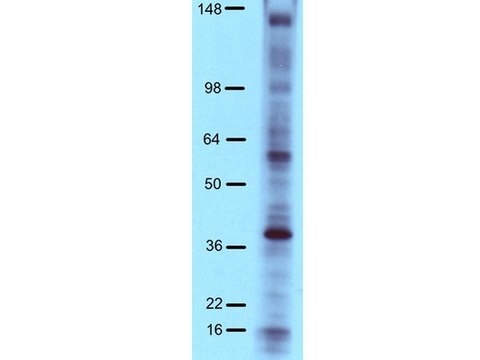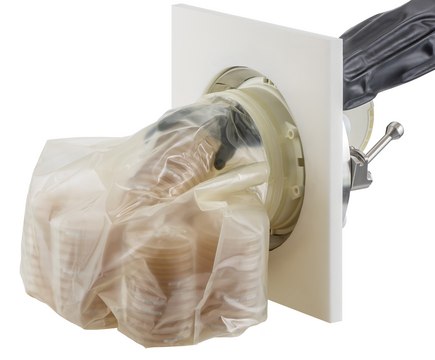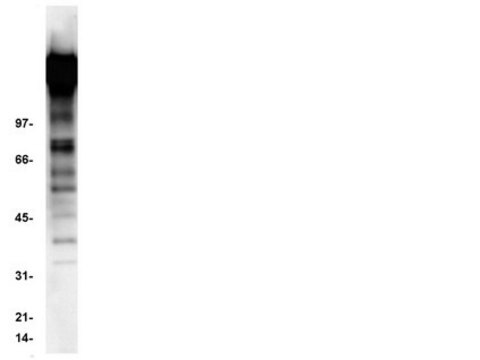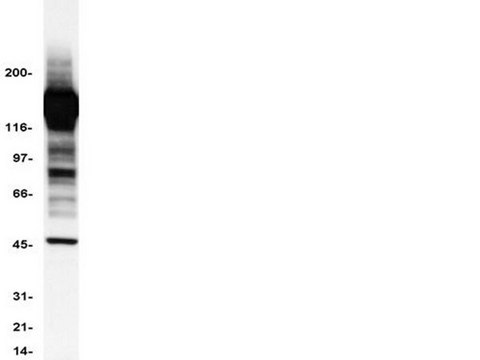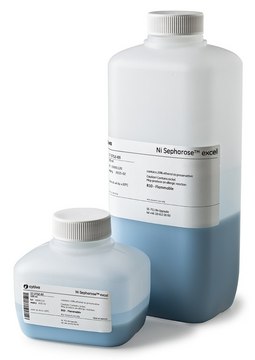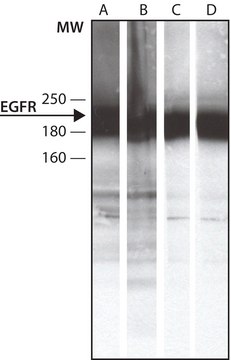16-101
Anti-Phosphotyrosine Antibody, clone 4G10®, agarose conjugate
clone 4G10®, Upstate®, from mouse
Synonym(s):
4G10 Phosphotyrosine Antibody, Clone 4G10 Anti-Phosphotyrosine, Phosphotyrosine Detection Antibody
About This Item
Recommended Products
biological source
mouse
Quality Level
antibody form
purified antibody
antibody product type
primary antibodies
clone
4G10®, monoclonal
species reactivity
vertebrates
manufacturer/tradename
Upstate®
technique(s)
immunoprecipitation (IP): suitable
shipped in
wet ice
target post-translational modification
unmodified
Gene Information
human ... PID1(55022)
General description
Specificity
Immunogen
Application
Signaling
General Post-translation Modification
Suitable for immunoprecipitation and affinity purification.
Features and Benefits
Quality
Immunoprecipitation Analysis:
10-50 μL of this antibody immunoprecipitated the EGF receptor and other tyrosine phosphorylated proteins from EGFstimulated A431 cells.
Target description
Physical form
Storage and Stability
Analysis Note
Pervanadate-treated human A431 cell extracts, EGF-treated human A431 cells.
Other Notes
Legal Information
Disclaimer
Not finding the right product?
Try our Product Selector Tool.
Storage Class Code
10 - Combustible liquids
WGK
WGK 2
Certificates of Analysis (COA)
Search for Certificates of Analysis (COA) by entering the products Lot/Batch Number. Lot and Batch Numbers can be found on a product’s label following the words ‘Lot’ or ‘Batch’.
Already Own This Product?
Find documentation for the products that you have recently purchased in the Document Library.
Our team of scientists has experience in all areas of research including Life Science, Material Science, Chemical Synthesis, Chromatography, Analytical and many others.
Contact Technical Service
